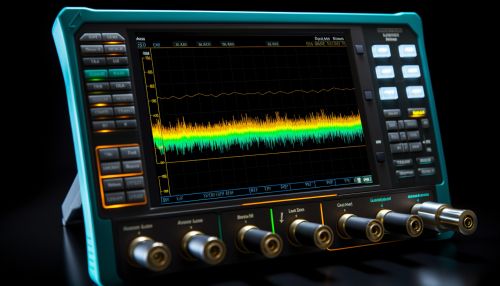Analog Transmission
Introduction
Analog transmission is a method of conveying voice, data, image, signal, or video information. It uses a continuous signal varying in amplitude, phase, or another property that is in proportion to a specific characteristic of a variable. The term "analog" denotes the correlation between the signal and the original information.
Principles of Analog Transmission
Analog transmission is based on the principle of signal modulation, which involves altering the properties of a carrier signal in response to the instantaneous value of the message signal. The carrier signal is typically a higher frequency periodic waveform. The three basic types of modulation include amplitude modulation (AM), frequency modulation (FM), and phase modulation (PM).


Amplitude Modulation
In amplitude modulation, the strength (amplitude) of the carrier signal is varied in proportion to the waveform being sent. This waveform may correspond to sounds to be reproduced by a loudspeaker, or the light intensity of television pixels.
Frequency Modulation
Frequency modulation (FM) is the encoding of information in a carrier wave by varying the instantaneous frequency of the wave. This contrasts with amplitude modulation, in which the amplitude of the carrier wave varies, while the frequency remains constant.
Phase Modulation
Phase modulation (PM) is a modulation pattern that encodes information as variations in the instantaneous phase of a carrier wave.
Advantages and Disadvantages of Analog Transmission
Analog transmission has its advantages and disadvantages. It is essential to understand these to appreciate the relevance of analog transmission in various applications.
Advantages
Analog transmission is relatively simple and can be transmitted over long distances. It is also capable of conveying an infinite amount of data, as there are no limits to the values that the signal can take.
Disadvantages
The main disadvantage of analog transmission is the degradation of the signal over long distances. This is due to the noise and interference that the signal picks up during transmission. Another disadvantage is the difficulty in separating the original data from noise once the signal has been received.
Applications of Analog Transmission
Analog transmission is used in various applications, including broadcasting and telecommunications.
Broadcasting
In broadcasting, analog transmission is used in radio and television broadcasting. It was the standard method of broadcasting before the advent of digital broadcasting.
Telecommunications
In telecommunications, analog transmission is used in the transmission of voice, data, and video signals over long distances.
Transition to Digital Transmission
The transition from analog to digital transmission has been a significant development in the field of communication. Digital transmission offers several advantages over analog transmission, including improved signal quality, increased capacity, and enhanced security.
